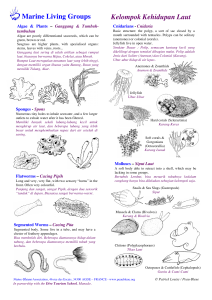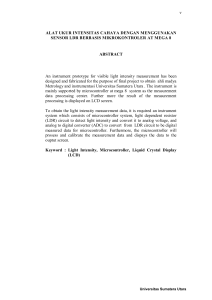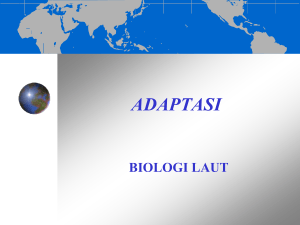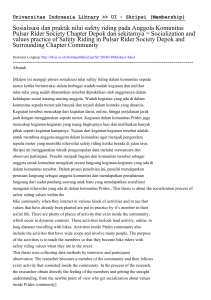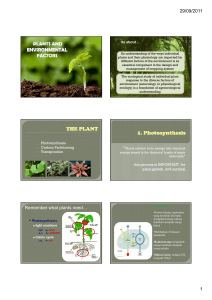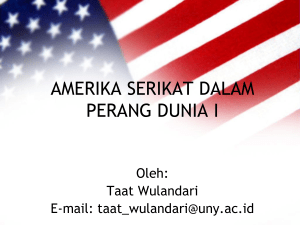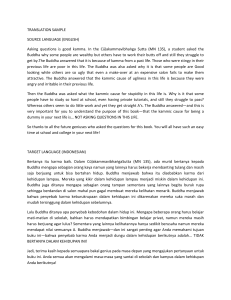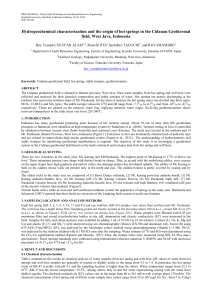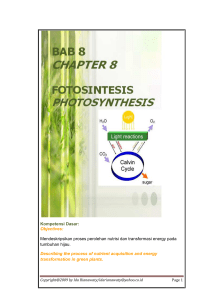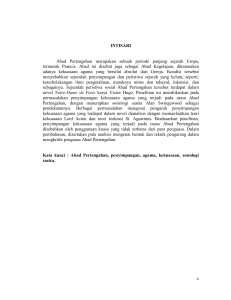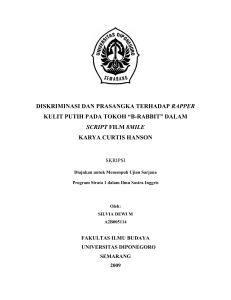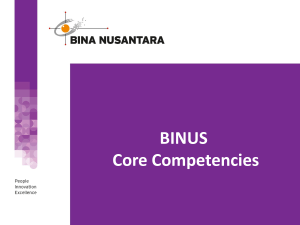Biologi Laut | Pasang Surut
advertisement
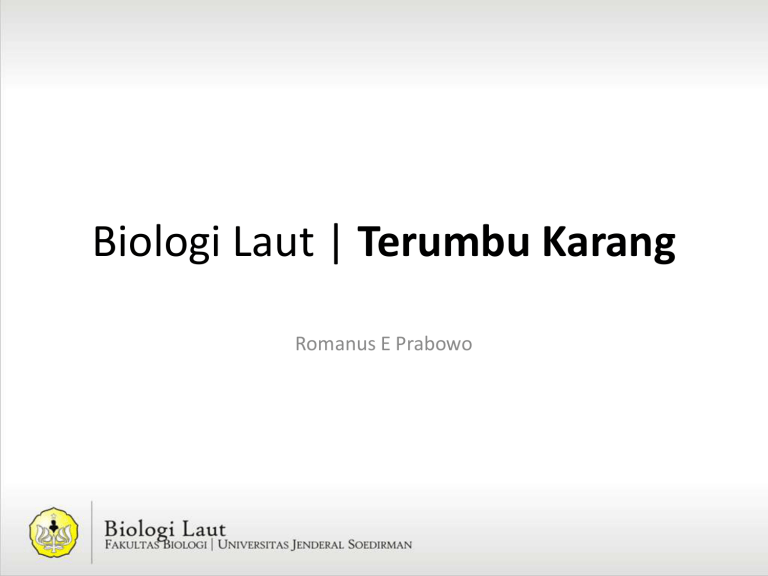
Biologi Laut | Terumbu Karang Romanus E Prabowo Faktor Lingkungan Yang Mempengaruhi Hewan Karang dan Terumbu Karang Romanus E Prabowo Faktor Lingkungan untuk Pertumbuhan Terumbu Karang Sehat • • • • • • • Perairan laut tropis yang hangat Salinitas air laut normal Radiasi matahari Nutrient anorganik yang rendah Turbiditas rendah Sedimentasi rendah Gerakan air yang kuat Spektrum Radiasi Elektromagnetik PAR Photosyntetic Active Radiation • The spectral range (wave band) of solar radiation from 400 to 700 nanometers that photosynthetic organisms are able to use in the process of photosynthesis Absorbsi cahaya dalam Lautan Light Intensity • decreases with depth • 100 meter = depth limit of hermatypic corals primarily a result of the overall reduction in light • many studies have focused upon how changing light intensities with depth affect the photosynthesis of zooxanthellae of corals Absorbsi cahaya dalam Lautan Spectral Characteristics • red wavelengths absorbed more readily by water than blue wavelenths • blue light penetrates deepest in the oceans • the change in the spectral characteristics of light with depth likely to influence plant photosynthesis • less work has been done to understand the influence of the spectral distribution of light on zooxanthellae photosynthesis in corals Absorbsi cahaya dalam Lautan Absorbsi cahaya dalam Lautan Produktivitas Primer The rate of production of organic matter by autotrophs Photosynthesis 6CO2 + 6H2O = C6H12O6 + 6O2 Produktivitas Primer Photoadaptation in Corals • Changes in pigment concentrations and algal densities in response to light intensity Photoadaptation in Corals Absorption of Ultraviolet Radiation by the Earth’s Atmsophere Absorption of Ultraviolet Radiation by the Earth’s Atmsophere • damage to DNA resulting in mutations • damage to other biological molecules o proteins: enzyme inactivation o lipids: disruption of cell membranes and membrane transport systems Absorption of Ultraviolet Radiation by the Earth’s Atmsophere Ultraviolet Absorbing Compounds in Corals • mycosporine-like amino acids (MAA’s) • MAA’s apparently produced by zooxanthellae but stored in the animal tissues • concentrations greater in shallow water corals than in deeper ones • transplation experiments demonstrate adaptional changes in pigment concentrations • positively buoyant eggs exhibit higher concentrations of pigments than do negatively buoyant eggs Corals and UV Radiation
